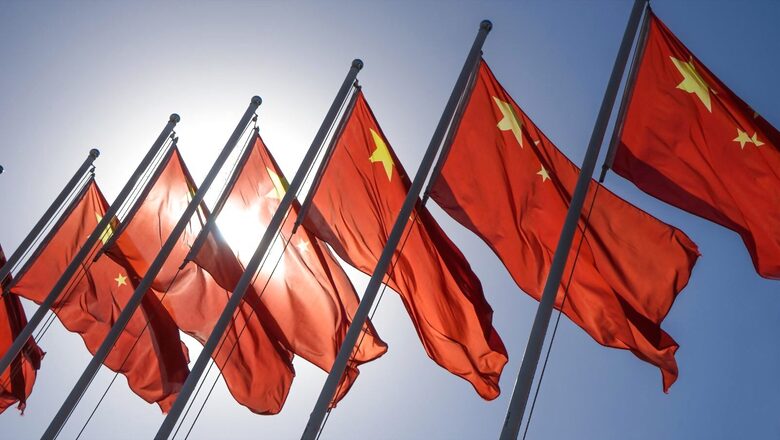
views
China launched the world-wide Belt and Road Initiative (BRI) in 2013, the very year when its current president Xi Jinping assumed power. Jinping mooted the concept and announced it in September 2013 in Central Asia Republic (CAR) Kazakhstan as the ‘Silk Road Economic Belt’ with the intention of creating a vast network of road, rail and support infrastructure to connect majority of land-locked nations with other nations of the world to ensure economic growth, prosperity and better understanding of each other.
It is besides the point that China is leveraging its financial muscles to expand its economic, diplomatic and political influence in the garb of this initiative.
In addition to this, China has also conceptualised the extension of the maritime silk route, which is being implemented through development of ports, shipping infrastructure and road network in target countries.
Appearing on the face of it as a progressive economic development strategy, it has huge future challenges for the participating countries, given the expansionist agenda of China clubbed with its debt-trapping strategy.
While the land connectivity addresses large a number of nations in Asia and Europe, the maritime connectivity addresses majority of coastal nations in Asia, Africa and Europe. These two converge in Europe, both having commenced in China. These have multiple branches to cover a larger number of nations as against being a single linear alignment. China has carefully chosen these countries to secure the move of its energy resources, source raw materials from the resource-rich countries and reach out to major population bases to explore the markets for its produce and utilisation of spare capacities.
BRI is also known as One Belt One Road (OBOR) in China but BRI has been chosen to reflect more inclusiveness as it is being propagated as an initiative rather than an imposing agenda. The concept gained momentum in 2017 once it was included in the constitution of the Chinese Communist Party (CCP) the same year.
China has invested substantial effort, leadership, funds and strategy, which has resulted in its expansion substantially. It expands on the erstwhile Silk Road established during Han Dynasty and covers more than 140 countries, four continents, including Latin America. The project is a grand political and economic initiative with the aim of establishing China as the sole superpower by 2035 and completing all BRI projects by 2049 as world-class infrastructure. The project connects more than 70 per cent of energy resources, touches almost half of the world population directly or indirectly and shortens multiple connectivities substantially, one such example being the China Pakistan Economic Corridor (CPEC).
CPEC had commenced in mid-2013 but got more impetus from 2015, being one of the BRI projects. CPEC will have road and rail networks between China and Pakistan, with multiple infrastructure projects along these. Ports will be also developed to include Gwadar and Karachi besides westward extension to benefit China to provide an alternative route for energy supplies as well as reach countries like Afghanistan and Iran.
The BRI has been criticised by many countries and analysts in its current form. Some of the observations are as under:
• The financing model is neither fully transparent nor in the interest of the host country.
• The project implementation is poor in a number of cases due to public protests, labour concerns and being exploitative in nature.
• BRI has also debt trapped certain nations like Sri Lanka and Pakistan whereas some other countries are also weakening while trying to sustain these projects that are progressing in an open-ended manner.
• New fault lines are emerging between China, the host nation’s government and local population. The project is emerging primarily unsupportive to the local economy and mostly exploitative.
• A number of alignments pass through disputed territories, especially in the Indian context. BRI as well as CPEC pass through disputed areas of Aksai Chin in Ladakh and PoK in Pakistan. The recent joint call by BRI, CPEC participants to invite other countries to participate in such projects has also drawn adverse criticism from India. The maritime alignment of BRI is also a strangulation attempt to encircle India whereas China showcasing its friendship for Sri Lanka has already strangulated it, nearing the collapse of the Sri Lankan economy. The strangulation has been also done for Pakistan through CPEC, which is also inching towards economic collapse, slowly but steadily.
Besides the above, there are many more challenges related to BRI transparency in funding and operationalisation of projects being the most important ones. Since the world today draws its strength from economic strength, BRI has also been seen only as furthering Chinese economic concerns in the façade of being advantageous for all.
It’s obvious that BRI will be a counter to economic interests of USA and its European friends. It is towards this that G7 leaders and President Biden announced launch of Partnership for Global Infrastructure to enhance connectivity and infrastructure development in the undeveloped countries which is a must if the world economy has to grow and the benefit of growth has to reach the last person.
The moot issue remains the Chinese model which has not only debt trapped a number of countries but also strangulated its all-weather friend Pakistan economically. Unpaid dues by Pakistan, collapsing economy, killing of Chinese workers and unrest in Balochistan are some of the several challenges faced by CPEC in Pakistan. Though the Pakistan government is going all out to support CPEC, it is collapsing slowly but steadily. If Pakistan does not understand the Chinese game plan and take proactive steps for recovery of its economy, it is sure to move in the debt trap in time to come.
The Chinese have been very selective in identifying the countries both along the land route as well as maritime route for BRI which further its political, diplomatic, strategic and economic agenda with least consideration to the host country. Whether USA led G-7 bid to develop requisite infrastructure to connect various countries becomes an appropriate response to Chinese BRI or not will still need to be seen. At the moment, Chinese BRI has the definite edge despite its destructive agenda even with its friends. It leaves none while spearheading its expansionist agenda.
Read all the Latest Opinion News and Breaking News here




















Comments
0 comment